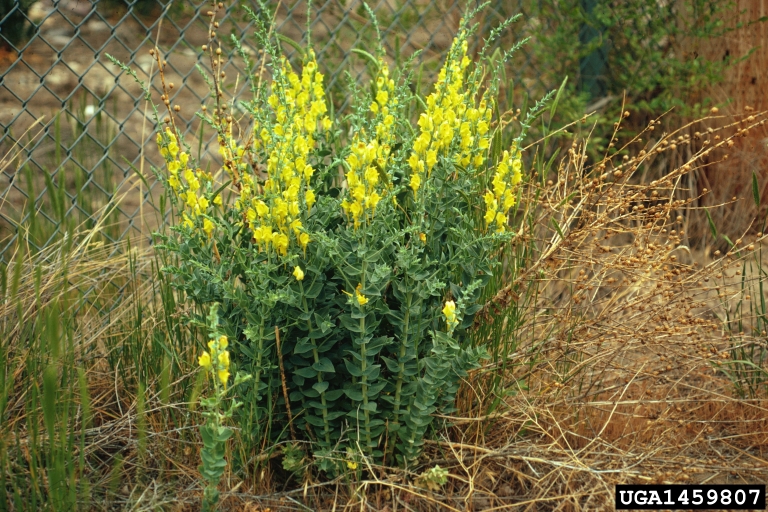Weed Of The Month: Dalmatian Toadflax
 | Author:
Allison Kosto, MSU Broadwater County Extension Agent
MSU Broadwater County Extension Agent |
Weed of the Month: Dalmatian Toadflax
Allison Kosto
MSU Broadwater County Extension Agent
Our Weed of the Month, Toadflax, is debatably one of the “prettiest” weeds on the Montana noxious weed list. However, it is an example of a plant that was introduced to the United States as a garden ornamental and quickly escaped the bounds of the garden to become invasive.
Description & Habitat
Dalmatian toadflax is native to the Mediterranean. It was introduced to North America in 1874 as an ornamental, fabric dye and medicinal plant. It has been reported in nearly all Montana counties. Infestations are particularly heavy in Broadwater, Jefferson, Lewis & Clark and Bighorn Counties. It is a perennial and can be found in a variety of sites but seems particularly fond of dry open grassland and forests.
The plant is easily confused with another noxious week, yellow toadflax. Both have yellow “snapdragon” like flowers, but different leaf structure. Dalmatian toadflax has a more slender profile and blue-green leaves and stem with a waxy coating. It has a very intensive root system with a tap root that can reach 10 feet long and lateral roots up to 12 feet. The plant can grow up to 4 feet high. Leaves are heart-shaped and clasp the stem. It can reproduce from roots in addition up to 500,000 seeds each year from a single plant. Seeds stay viable in the soil for up to 10 years.
Dalmatian toadflax has a severe negative impact on native rangeland. In areas with dense populations of toadflax, grass production can be 2.5 times lower. The plant is extremely aggressive and highly adaptable. It can outcompete winter annuals and shallow rooted perennials for moisture. Additionally, dalmatian toadflax plants contain a glucoside compound that is poisonous, especially to cattle. However, generally, livestock avoid the plant.
Management
You can play a role in reducing the spread of seeds. Vehicles are a large spreader of seeds even in dry conditions. If you are on land with weeds, wash vehicles, ATVs and any equipment before taking them home. Do not drive or walk in areas that are heavily infested if possible. Purchase certified noxious weed seed-free hay when possible.
Sheep and goats can be trained to eat dalmatian toadflax to help control seed production. Tilling, mowing, burning and hand pulling alone are typically not effective, but can be effective as part of an integrated weed management plan.
Six insects have been released to control Dalmatian toadflax. However, only one, a stem-boring weevil, has become well established. There have been some issues with winter survival, so it does best where there is significant snow cover or milder temperatures.
Selective herbicides can provide good control and are often most cost effective in small or new infestations. The best time to spray is at the rosette, early bud/pre-bloom stage or fall regrowth. Commonly used chemicals include Escort, Plateau, Telar or Tordon (restricted use). The thick waxy coating can make herbicide penetration a challenge, so a surfactant is recommended. Always read and follow the entire label when applying herbicide. Common chemical names are used for clarity but do not imply endorsement of a product or brand.
For assistance with weed identification and control, contact the MSU Extension Office in Broadwater County at 406-266-9242 or allison.kosto@montana.edu. Broadwater County has a cost share program for controlling noxious weeds including dalmatian toadflax. For more information contact the Broadwater County Weed District at 406-266-9243.
Article Images
Click on Image Thumbnail(s) to view fullsize image
PhotoCredit: Utah State University, Bugwood.org
Image 1 Caption: Dalmatian Toadflax
Photo Sourced from Utah State University, Bugwood.org
